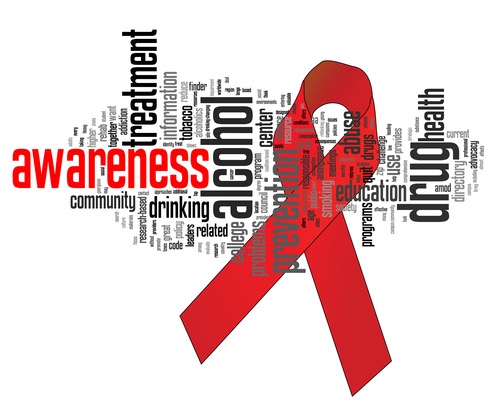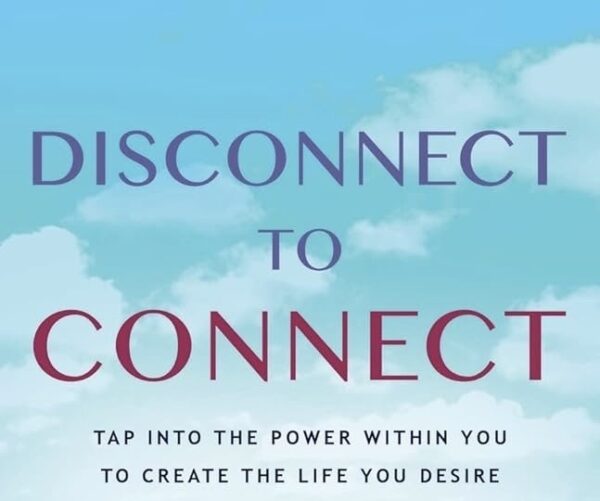


Welcome to the final chapter of our Stress Awareness Month journey, where we culminate our exploration with a focus on practical strategies to master the art of stress management. We’ve delved into the understanding of stress in the modern world, identified triggers, and built resilience. Now, armed with insights, let’s embark on a transformative quest towards a balanced and fulfilling life.
Crafting Your Stress Management Toolkit
- Holistic Well-being Practices: Stress management goes beyond fleeting remedies; it’s about cultivating a holistic approach to well-being. Explore practices like yoga, meditation, and deep breathing exercises to create a foundation for inner peace. These activities not only alleviate stress in the moment but contribute to long-term emotional resilience.
- Time Management and Prioritization: Effectively managing your time and priorities is a powerful stress management tool. Learn to distinguish between urgent and important tasks, delegate when necessary, and embrace the concept of “good enough.” By setting realistic expectations and boundaries, you create space for a more balanced and fulfilling life.
- Mindful Nutrition and Physical Activity: The connection between physical health and stress management is undeniable. Nourish your body with mindful nutrition, incorporating a balance of whole foods and hydration. Regular physical activity releases endorphins, reducing stress hormones and promoting a positive mood. Find joy in movement, whether it’s a brisk walk, a dance session, or a calming yoga practice.
- Digital Detox and Unplugging: In the digital age, a constant stream of information can contribute to stress. Practice periodic digital detoxes, set boundaries for screen time, and create tech-free zones in your home. Unplugging allows you to reconnect with the present moment, fostering a sense of calm and reducing the mental clutter that often accompanies technology.
- Cultivating Gratitude and Positivity: Shift your focus from what causes stress to what brings joy and gratitude. Keep a gratitude journal, acknowledging the positive aspects of your life. Surround yourself with positivity, whether through uplifting literature, inspiring podcasts, or meaningful conversations. Cultivating a positive mindset enhances resilience and transforms your approach to stress.
Creating a Balanced Life
- Setting Realistic Goals: Embrace the power of realistic goal-setting. Break down larger objectives into manageable steps, celebrating small victories along the way. This approach fosters a sense of accomplishment, reduces overwhelm, and allows you to maintain equilibrium in your pursuits.
- Embracing Self-Care Rituals: Prioritize self-care as a non-negotiable aspect of your routine. Whether it’s a quiet moment with a book, a soothing bath, or a creative outlet, dedicate time to activities that replenish your energy and nourish your soul. Recognize that self-care is not a luxury but a fundamental component of a balanced life.
- Continuous Learning and Adaptability: The ability to adapt and learn from experiences is fundamental to stress management. Cultivate a growth mindset, viewing challenges as opportunities for learning and personal development. This adaptability empowers you to navigate the ever-changing landscape of life with resilience and grace.
As we conclude our exploration of stress during this awareness month, remember that the journey towards a balanced life is ongoing. By integrating these practical strategies into your daily routine, you equip yourself with a personalized toolkit for mastering the art of stress management. Embrace the process, celebrate progress, and savor the moments of tranquility on your path to a more balanced and fulfilling life.
Thank you for joining me on this transformative journey. May the insights gained during Stress Awareness Month serve as a compass for navigating life’s challenges with resilience, mindfulness, and a commitment to well-being.

As April dawns upon us, it brings with it a poignant reminder: Stress Awareness Month. In a world where the hustle and bustle often blur the lines between urgency and serenity, it’s essential to pause and reflect on the silent yet significant struggle many of us face daily. Stress has become an unwelcome companion for countless individuals, affecting our mental, emotional, and physical well-being.
In this introductory piece, we embark on a journey to unravel the layers of stress, exploring its roots, manifestations, and impacts in our modern lives. Join me as we delve into the depths of this intricate phenomenon, shedding light on its prevalence and the imperative need to address it with empathy and understanding.
In the weeks to come, we’ll navigate through the labyrinth of stress, equipping ourselves with knowledge and strategies to combat its pervasive influence. Together, let’s embark on a transformative quest toward greater self-awareness and resilience in the face of adversity.
Stay tuned as we embark on this enlightening journey, seeking solace amidst the chaos and fostering a culture of compassion and support. It’s time to unveil the silent struggle and embrace the path to a more balanced and fulfilling life.
Are you ready to embark on this journey with me? Let’s navigate through the nuances of stress, arm ourselves with insights, and emerge stronger, wiser, and more resilient than ever before.
Unveiling the Silent Struggle
As April unfolds, casting its spotlight on Stress Awareness Month, it beckons us to pause and confront a prevalent yet often overlooked challenge: stress in the modern world. In the relentless pursuit of success, fulfillment, and societal expectations, stress has stealthily woven its threads into the fabric of our lives. It’s time to unravel the layers, understand its nuances, and, most importantly, empower ourselves with strategies to navigate this complex terrain.
Ways of Understanding Stress in the Modern World:
- Digital Overload and Constant Connectivity: The digital age has ushered in unprecedented connectivity, but it also brings a relentless barrage of information, notifications, and social comparisons. Our constant engagement with screens and the pressure to stay connected can contribute significantly to stress. Recognizing the impact of our digital interactions is the first step in understanding the modern dynamics of stress.
- Work-Life Integration Challenges: The traditional boundaries between work and personal life have blurred, ushering in the era of work-life integration. While this flexibility offers opportunities, it also poses challenges in establishing clear delineations. Understanding the demands of our multifaceted roles and acknowledging the need for balance is crucial for managing stress in a world that never truly disconnects.
- Social Pressures and Comparison Culture: The pervasive influence of social media has given rise to a culture of constant comparison. The carefully curated highlight reels of others can fuel feelings of inadequacy and intensify the pressure to measure up. Recognizing and challenging these societal expectations is essential for fostering a healthier mindset and mitigating stressors associated with comparison culture.
Positive Ways to Deal with Stress:
- Mindfulness and Meditation: Incorporating mindfulness practices and meditation into our daily routines can be a powerful antidote to stress. Taking time to focus on the present moment, breathe, and cultivate awareness helps break the cycle of anxious thoughts. Apps, guided sessions, or even simple moments of solitude can be transformative in building resilience.
- Establishing Boundaries: In a world where boundaries blur, setting clear limits is crucial. Learning to say no, prioritizing self-care, and carving out dedicated time for relaxation fosters a healthier balance. Establishing boundaries not only protects our well-being but also enhances our ability to navigate the challenges of the modern world.
- Cultivating a Supportive Network: Social connections are a cornerstone of well-being. Cultivating a supportive network of friends, family, or colleagues can provide invaluable emotional support. Sharing experiences, seeking advice, or simply having someone to lean on fosters a sense of community, reducing the isolating impact of stress.
Embarking on this journey to understand and navigate stress in the modern world requires both self-reflection and proactive steps toward positive change. In the coming weeks, we will delve deeper into these aspects, exploring practical strategies and insights to build resilience and embrace a more balanced and fulfilling life.
Are you ready to equip yourself with the tools needed to navigate the complexities of stress in the modern era? Stay tuned as we unravel the silent struggle together and discover pathways to a more empowered and serene existence.

In the fast-paced digital era of 2024, where technological advancements have seamlessly integrated into every aspect of our lives, it has become more crucial than ever to pause and reflect on the impact of constant connectivity on our mental well-being. The digital detox movement, gaining momentum as a response to the overwhelming presence of technology, invites us to step back and reclaim our focus, relationships, and overall presence in the real world. This blog explores the significance of disconnecting to connect, the emergence of the 2024 social movement, and its profound effects on the mental health of teenage kids and young adults.
Disconnecting to Connect:
In a world dominated by screens and notifications, disconnecting to connect has become a revolutionary act. The digital detox movement encourages individuals to consciously step away from their devices, social media, and virtual engagements to reconnect with the tangible world around them. By doing so, people aim to rediscover the joy of face-to-face interactions, nature, and self-reflection. It’s about finding a balance between the benefits of technology and the need for genuine, in-person connections.
The 2024 Social Movement:
The year 2024 marks the zenith of the social movement advocating for a mindful approach to technology use. This movement isn’t about rejecting technology entirely but rather about creating a harmonious coexistence. Communities are coming together to organize digital detox challenges, workshops, and events, emphasizing the importance of reclaiming our time, attention, and mental well-being from the digital realm.
Mental Effects on Teenage Kids and Young Adults:
The impact of constant digital exposure on the mental health of teenagers and young adults cannot be overstated. Social media, in particular, has been linked to increased feelings of anxiety, depression, and loneliness among this demographic. The pressure to curate a perfect online persona, coupled with the fear of missing out (FOMO), contributes to a toxic digital environment. The 2024 social movement recognizes the urgency of addressing these issues and aims to empower the younger generation to take control of their digital lives.
The Importance of Mindful Tech Use:
As part of the movement, there is a growing emphasis on fostering a culture of mindful tech use. This involves setting boundaries, such as designated screen-free times, implementing digital curfews, and actively engaging in activities that promote mental well-being. By incorporating these practices into daily life, individuals can cultivate a healthier relationship with technology and mitigate the negative effects associated with excessive screen time.
Reclaiming Presence:
Reclaiming presence in the digital age is a revolutionary act of self-care and societal transformation. The 2024 social movement serves as a beacon, guiding individuals toward a more balanced and fulfilling relationship with technology. By disconnecting to connect, we can rediscover the beauty of genuine human connections, cultivate mindfulness, and create a world where the benefits of technology enhance rather than detract from our overall well-being.
Cleansing the Noise:
In the midst of the 2024 social movement, the call to reclaim presence is more relevant than ever. By disconnecting from the digital noise, individuals can rediscover the richness of the physical world, strengthen relationships, and safeguard their mental health. As we navigate the ever-evolving landscape of technology, let us embrace a mindful approach that allows us to harness the power of connectivity without sacrificing the essence of human connection.

In the realm of unconventional wellness practices, the Wim Hof Breathing Method stands out as a powerful and transformative technique that has gained widespread attention. Developed by the Dutch extreme athlete Wim Hof, this breathing method combines specific breathing patterns, cold exposure, and meditation to unlock a range of physical and mental benefits. In this blog post, we’ll delve into the details of the Wim Hof Breathing Method, exploring how it works and the potential benefits it offers.
Understanding the Wim Hof Breathing Method:
At its core, the Wim Hof Breathing Method involves a series of deep, rhythmic breaths followed by a period of breath retention. The technique typically consists of three main phases:
- Breathing Exercise:
– Find a comfortable space to sit or lie down.
– Inhale deeply through the nose, filling the lungs with air.
– Exhale forcefully and completely through the mouth.
– Repeat this cycle for about 30 breaths.
- Retention Phase:
– After the final exhalation, take a deep breath in and let it out completely.
– Hold your breath for as long as you can comfortably manage.
– When you feel the urge to breathe again, take a deep breath and hold it for 15 seconds.
– Exhale and resume normal breathing.
- Cold Exposure:
– Incorporating cold exposure, such as ice baths or cold showers, is a key component of the Wim Hof Method.
– The cold exposure is believed to enhance the benefits of the breathing exercises, promoting improved circulation, reduced inflammation, and increased resilience.
How It Works:
The Wim Hof Breathing Method is based on the principles of controlled hyperventilation and conscious breath retention. The deep, rhythmic breathing helps to oxygenate the body, alkalize the blood, and activate the parasympathetic nervous system. This, in turn, can lead to a range of physiological and psychological effects, including:
- **Increased Energy Levels:**
– The enhanced oxygen intake may boost energy levels and reduce feelings of fatigue.
- Improved Immune Function:
– Wim Hof’s method has been associated with improvements in immune function, possibly due to reduced inflammation and increased production of anti-inflammatory cytokines.
- Enhanced Mental Clarity:
– Practitioners often report improved focus, concentration, and mental clarity after engaging in the breathing exercises.
- Stress Reduction:
– The method activates the parasympathetic nervous system, promoting relaxation and reducing stress levels.
- Mind-Body Connection:
– The combination of breathwork, cold exposure, and meditation fosters a stronger mind-body connection, empowering individuals to better regulate their responses to various stressors.
Conclusion:
While the Wim Hof Breathing Method has garnered considerable following and anecdotal evidence of its benefits, it’s essential to approach it with an understanding of individual variations and potential contraindications. Individuals with certain medical conditions should consult with healthcare professionals before incorporating the method into their routine.
Whether you’re seeking increased vitality, improved mental resilience, or a holistic approach to well-being, the Wim Hof Breathing Method offers a unique and accessible avenue to explore. As with any wellness practice, consistency and mindfulness are key, allowing individuals to discover the transformative potential within their own breath.
